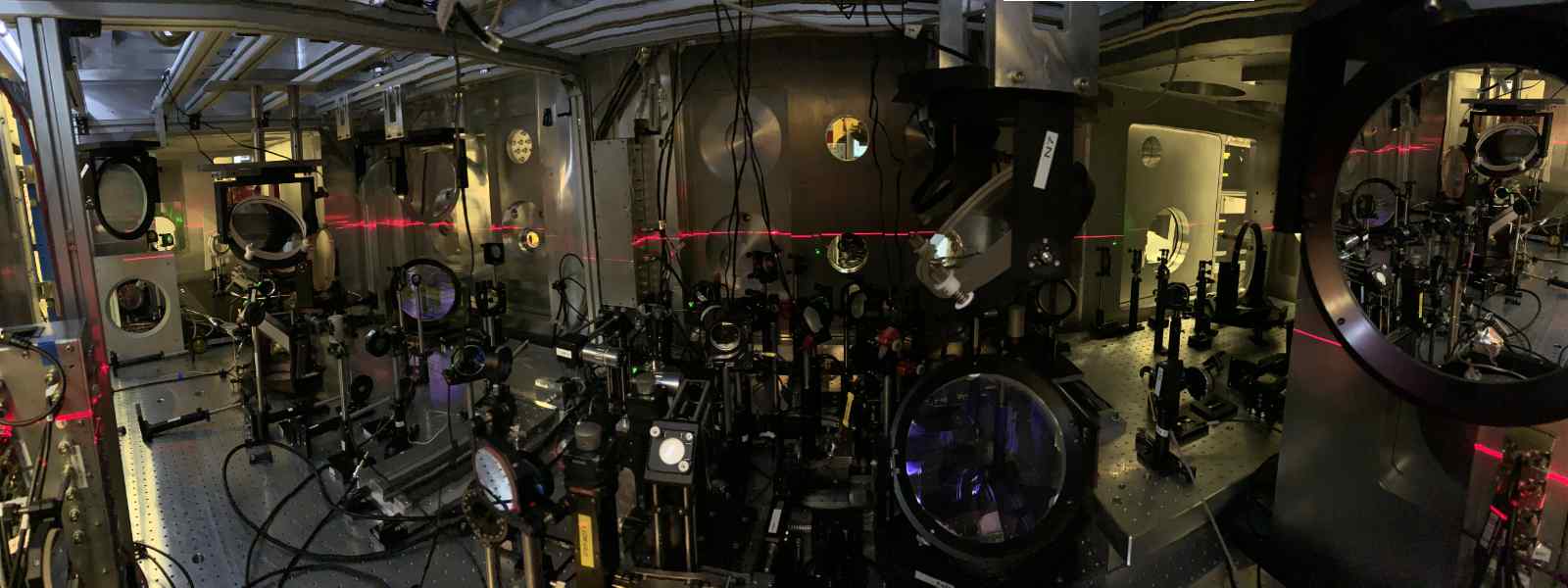
Laser-driven ‘mirrors’ capable of reflecting or manipulating light have been produced in research led at the University of Strathclyde.
The ‘mirrors’ exist for only a fragment of time but could help to reduce the size of ultra-high power lasers, which currently occupy buildings the size of aircraft hangars, to university basement sizes.
They have potential to be developed into a variety of plasma-based, high damage-threshold optical elements that could lead to small footprint, ultra-high-power, ultra-short pulse laser systems.
The new way of producing mirrors, and other optical components, points the way to developing the next generation high power lasers, from hundreds of petawatts (10 zto the power of 15 watts) to exawatts (10 to the power of 18 watts).
The new research has been published in Communications Physics.
Professor Dino Jaroszynski, of Strathclyde’s Department of Physics, led the research. He said: “High-power lasers are tools that enable research in many areas of medicine, biology, material sciences, chemistry and physics.
“Making high-power lasers more widely available would transform the way science is done; a university could have these tools in a single room, on a table top, for a reasonable price.
“This work significantly advances the state-of-the-art of high-power lasers by proposing new methods for creating optical elements, which are more robust than existing elements and also transient, which makes them unique.
“This is more compact and much more robust and could provide a paradigm shift in high power lasers, which would stimulate new directions of research. The new method presented would also be of wide interest to a diverse community developing and using high power lasers.
“The group is now planning further proof-of-principle experiments to demonstrate the robustness and fidelity of the plasma optical elements.”
The new research has produced layered plasma mirrors using counter-propagating laser beams. Plasma is fully ionised gas and makes up the vast majority of the visible universe. Counter-propagating laser beams produce a beat wave in plasma that drives electrons and ions into a regular layered structure, which acts as a very robust, high reflectivity mirror.
This mirror exists only fleetingly, for a few picoseconds – less than 1/100,000,000,000th of a second – and its ghostly presence enables very intense laser light to be reflected or manipulated.
The transient layered plasma is known as a volume Bragg grating, similar to Bragg structures found in crystals, and is only a few millimetres across. It has the potential to be developed into a variety of plasma-based, high damage-threshold optical elements that could lead to small footprint, ultra-high-power, ultra-short pulse laser systems.
Dr Gregory Vieux of Strathclyde, who designed and undertook the experiments at the at the Science and Technology Facilities Council’s (STFC) Rutherford Appleton Laboratory (RAL) with Professor Jaroszynski, said: “This new way of producing transient robust plasma mirrors could revolutionise accelerators and light sources, as it would make them very compact and capable of producing ultra-short duration ultra-intense pulses of light, that are much shorter than can be produced easily by any other means.
“Plasma can withstand intensities up to 10 to the power of 18 watts per square centimetre, which exceeds the threshold for damage of conventional optics by four or five orders of magnitude. This will allow the size of optical elements to be reduced by two or three orders of magnitude, shrinking metre-sized optics to millimetres or centimetres.”
The research collaboration also involved: GSI Helmholtzzentrum für Schwerionenforschung in Darmstadt; the Institute for Applied Physics at Goethe-University Frankfurt/Main; Institut für Theoretische Physik at Heinrich-Heine-Universität in Düsseldorf; Ulsan National Institute of Science and Technology (UNIST) in South Korea; Instituto Superior Técnico at Universidade de Lisboa, and staff at STFC’s Central Laser Facility.
The study has received funding from the EPSRC (Engineering and Physical Sciences Research Council), part of UKRI, to support the Strathclyde-led Lab in a Bubble project.
Professor Jaroszynski is Director of the Scottish Centre for the Application of Plasma-based Accelerators (SCAPA), which hosts one of the highest power lasers in the UK.